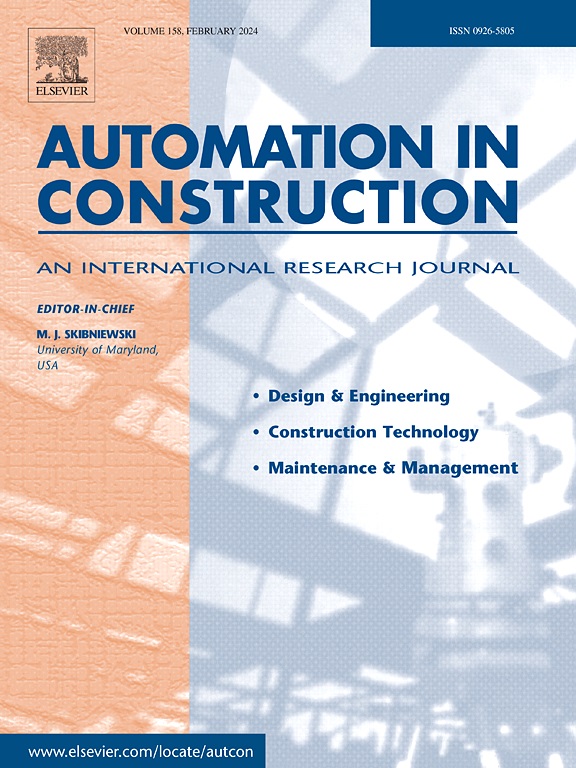Automating inspection data from bridge management system into bridge information model
IF 9.6
1区 工程技术
Q1 CONSTRUCTION & BUILDING TECHNOLOGY
引用次数: 0
Abstract
This paper presents an approach to enhance the implementation of the Bridge Information Modeling (BrIM) methodology during the operational stage by automating the integration of inspection data from Bridge Management Systems (BMS) into BrIM models. While the data from BMS is available and retrievable from spreadsheets, the 3D bridge model is represented according to the Industry Foundation Classes (IFC) data model. Then, this paper introduces an algorithm that ensures seamless interoperability between the spreadsheets and the IFC data model. The semantically enriched BrIM models are achieved through a set of rules and procedures that are established to simplify the matching of the modeled objects with the components that characterize the bridge in the BMS. The openness of the IFC data model allows the identification of appropriate entities to store the corresponding information that comes from the BMS. This automated process removes the need for manual attachment of inspection data into IFC files, which is prone to errors, reduces the complexity of moving towards BrIM-based bridge management practices, and increases the efficiency of creating BrIM models for existing bridges. Finally, the proposed approach is a scalable and transferable solution that transportation agencies worldwide can adopt to manage bridge assets.
将桥梁管理系统中的检测数据自动转换为桥梁信息模型
本文提出了一种方法,通过将桥梁管理系统(BMS)的检测数据自动集成到BrIM模型中,在操作阶段增强桥梁信息建模(BrIM)方法的实施。虽然来自BMS的数据是可用的,并且可以从电子表格中检索,但3D桥模型是根据工业基础类(IFC)数据模型表示的。然后,本文介绍了一种算法,确保电子表格与IFC数据模型之间的无缝互操作性。语义丰富的BrIM模型是通过一组规则和过程实现的,这些规则和过程旨在简化建模对象与BMS中表征桥的组件之间的匹配。IFC数据模型的开放性允许识别适当的实体来存储来自BMS的相应信息。这一自动化过程消除了将检查数据手动附加到IFC文件中的需要(这很容易出错),降低了转向基于BrIM的桥梁管理实践的复杂性,并提高了为现有桥梁创建BrIM模型的效率。最后,所提出的方法是一个可扩展和可转移的解决方案,世界各地的运输机构可以采用它来管理桥梁资产。
本文章由计算机程序翻译,如有差异,请以英文原文为准。
求助全文
约1分钟内获得全文
求助全文
来源期刊

Automation in Construction
工程技术-工程:土木
CiteScore
19.20
自引率
16.50%
发文量
563
审稿时长
8.5 months
期刊介绍:
Automation in Construction is an international journal that focuses on publishing original research papers related to the use of Information Technologies in various aspects of the construction industry. The journal covers topics such as design, engineering, construction technologies, and the maintenance and management of constructed facilities.
The scope of Automation in Construction is extensive and covers all stages of the construction life cycle. This includes initial planning and design, construction of the facility, operation and maintenance, as well as the eventual dismantling and recycling of buildings and engineering structures.
 求助内容:
求助内容: 应助结果提醒方式:
应助结果提醒方式:


